

CLOUD OF CONFUSION VAPING AS HARM MINIMISATION THE VOLUME 19 EDITION 5 DRUGS, DISABILITY & THE NDIS UNDERSTANDING ACCESS FOR PEOPLE WITH CO-OCCURING DISABILITY AND DRUG USE PRISON AND PERFORMANCE USING THE ARTS TO BRING RESEARCH ALIVE CEO of the NSW Users and AIDS Association BULLETIN Q&A with DR MARY ELLEN HARROD
DISCLAIMER. The Bulletin is published by Penington Institute and funded by the Australian Government. The views expressed in this publication are not necessarily those of the Australian Government or Penington Institute.
Penington Institute takes no responsibility for loss or damage that may result from any actions taken based on materials within the Bulletin and does not indemnify readers against any damage incurred.
Penington Institute connects lived experience and research to improve the management of drugs through community engagement and knowledge sharing. A not-for-profit organisation, our focus is supporting cost-effective approaches that maximise community health and safety in relation to drugs including pharmaceuticals and alcohol.
Copyright © 2022. All rights reserved. All written material in this publication may be reproduced with the following citation: “Reprinted from vol. 19, ed. 5 of The Bulletin, published by Penington Institute, with credit to the author(s).”
A MESSAGE FROM THE CEO
This October the ACT passed legislation decriminalising possession of small amounts of nine illegal drugs –including heroin, cocaine and methamphetamine – for personal use, making it the first Australian jurisdiction to do so. The ACT health minister, Rachel Stephen-Smith, characterised the move as a “sensible reform...based on the expert advice that a health-focused, harm-reduction approach delivers the best outcome for people using drugs.”
I would also highlight Rachel’s comment in June this year that “treating drug addiction as a health issue improves outcomes for everyone in the community.” Recall that the ACT was also ahead of the curve in its limited legalisation of personal possession and cultivation of cannabis back in the early 1990s, reflecting the relative harm profiles of different drugs and no doubt the high prevalence of cannabis use in the community. It will be interesting to see if this most recent move prompts other states and territories follow their lead.
October also saw the new Labor Government release its first federal budget. This budget allocates $114 million to bolster critical mental health support and suicide prevention efforts, including $47.7 million for bulk-billed psychiatric consultations held through video telehealth for eligible patients. It also includes $314.5m in health initiatives targeting First Nations peoples.
Despite these admirable commitments to support some of Australia’s most vulnerable, conspicuously absent was any mention of the overdose crisis. The stories in this issue of The Bulletin on NDIS access and vaping for people who use drugs draw attention to some of the points of disconnect between the agencies that make up our healthcare system.
Closing out this issue, Dr Mary Harrod traces her journey from a turbulent early adulthood in New York City to her current role as CEO of The NSW Users and AIDS Association (NUAA), touching on questions of family, community, government and drugs along the way.
I hope you enjoy this issue of The Bulletin, and as always, please send us your thoughts and ideas for stories you would like to see covered in future.
John Ryan
 CEO Penington Institute
CEO Penington Institute

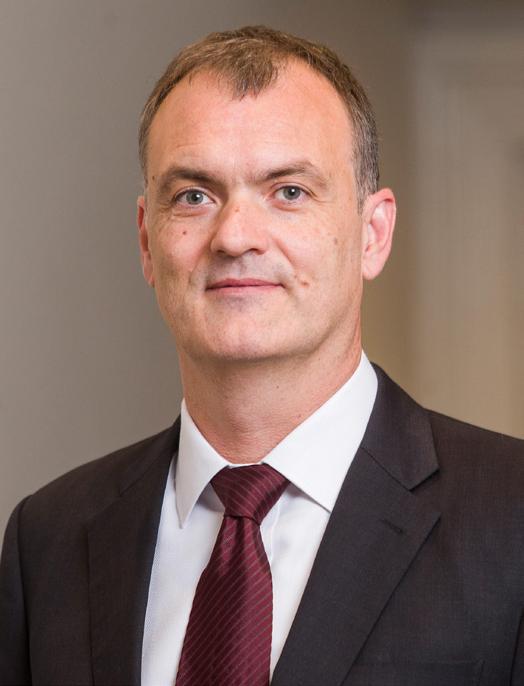 COVER IMAGE: Mary Harrod At Sydney Mardi Gras
COVER IMAGE: Mary Harrod At Sydney Mardi Gras
www.penington.org.au
CLOUD OF CONFUSION: VAPING AS HARM MINIMISATION

The past few years have witnessed a fierce debate about the efficacy, safety, and appropriate regulation of vaping, including its role in harm reduction for tobacco and drug use. Julia Banks attempts to sift through the noise.

People who use drugs (PWUD) have much higher rates of tobacco smoking and smoking-related harms than the rest of the population – and have a much harder time quitting. That makes Australian PWUD among the key potential beneficiaries of a more effective substitute for tobacco. However, access to nicotine vapes – electronic devices, also known as e-cigarettes, that heat a nicotine-containing liquid to produce an inhalable vapour – is unusually tight in Australia. It is illegal to use or possess nicotine vapes without a prescription, no nicotine vaping products have been approved for sale by the Therapeutic Goods Administration (TGA), and in October 2021, additional limits were placed on importation of vapes for prescribed personal use.
Proponents of strict regulation claim that the evidence for vaping’s benefits as a tobacco reduction tool are overstated, and that the health risk from e-cigarettes is significant. These arguments have largely carried the day. In addition to tight legal controls, the government’s National Health and Medical Research Council (NHMRC) strongly emphasises vaping’s harms over its potential benefits.
Many harm reduction advocates are not happy with the evolution of Australian vaping policy. Dr Colin Mendelsohn is a GP and the founding chairman of the Australian Tobacco Harm Reduction Association. He feels that a main effect of Australia’s prohibitionist laws is to push people affected by tobacco-related harm into the black market.
“It’s too hard for [people who want nicotine vapes], because they have to go to a doctor, very few doctors prescribe, and very few pharmacies dispense… we’ve created a regulatory model that’s not working, and [yet] they’re doubling down.”
The burden on PWUD can be significant. Sammy Molloy, a support worker for people with problematic drug use, attests that many of her clients have been deterred from entering residential drug treatment by the facilities’ zero-tolerance approach to tobacco, which also extends to vaping. “Most of them can’t go an hour without smoking, let alone weeks or months.”
PWUD are already less likely to speak with their GP about accessing help for addiction. Dr Carolyn Beaumont, a GP and authorised nicotine prescriber who focuses on PWUD and people with serious mental illness, notes that “generally, they’ve tried everything else… they’ve tried NRT [nicotine replacement therapy, which includes patches and gum], but there are a lot of barriers [including] numerous side effects and the cost. They miss the hand-to-mouth ritual… and they can’t just remove themselves from their smoking environment.”
This is true for Chloe*, a long-time tobacco smoker and now vaper in her thirties who also uses other drugs. She stopped injecting several years ago but still regularly smokes methamphetamine and has found that vaping helps her to pace her consumption of both cigarettes and meth while high. “Vaping’s good for when you’re on the pipe; you don’t just sit there cradling it.”
E-cigarettes or nicotine ‘vapes’ work by heating and vaporising a nicotine-containing liquid, which is then inhaled by the user in a similar way to a tobacco cigarette.
This is unlike a nicotine inhaler, in which a user obtains nicotine via the mucous membranes of the mouth, and the inhaled substance doesn’t reach the lungs.
Not all vape liquids contain nicotine. Non-nicotine vape fluids, which contain only flavours, can be sold legally in Australia.
Dr Marianne Jauncey
* Names altered to protect privacy
Some clinicians acknowledge the lack of prescribers but still favour a cautious approach. Professor Nick Zwar, a former GP and the Executive Dean of the Faculty of Health Science and Medicine at Bond University, argues that while it’s likely that switching from tobacco to vaping brings health benefits, it’s too early for vapes to be favoured for long-term smoking cessation, especially without a TGA-approved product on the market.

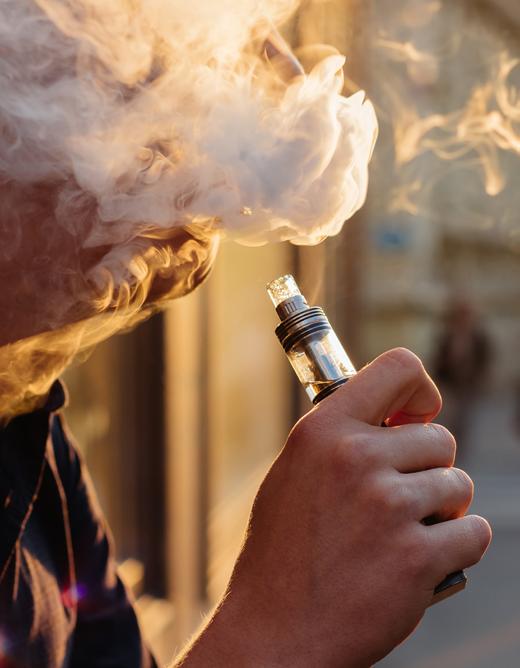

“We don’t have enough evidence about vaping…it is possible there are long-term harms from the things you inhale along with the nicotine…. With a TGA-approved option, practitioners would be much more confident to prescribe and offer nicotine vaping as a means of smoking cessation.”
In the meantime, the black market is flourishing. Chloe buys illicit pre-mixed nicotine vape fluid, sold under the counter at her local tobacconist; she was unaware that it can now be medically prescribed. She is far from alone: in a 2022 survey of regular stimulant users, nearly two-thirds of respondents reported recent use of non-prescribed nicotine vapes.
Many harm reduction advocates see the black market as the predictable result of a prohibitionist approach. Colin thinks Australia’s model removes the opportunity to educate the public about safe vaping – particularly the difference between black market vapes and regular vapes. “We don’t have a lot of evidence about the black-market products. They’re not like the proper approved products.”
Sam, 24, a nicotine user who oscillates between smoking and vaping, exemplifies this sentiment. “It feels a lot less safe than smoking. Twice now, I’ve decided to switch back to smoking cigarettes again, because I thought this vaping stuff was too unsafe.”
Nick suggests that instead of changing from a prescription-only model, health services that work with PWUD and mental health issues could expand their capacity to prescribe or implement systems to identify patients likely to suffer tobacco-related harm and refer them to an accessible prescriber. “We need to think about the health services they visit – could there be someone like a nurse practitioner that can do the prescribing? Should pharmacies get involved?”
Consumers just want greater clarity. Matt, who has lived experiencing of injecting drug use, recently transitioned to vaping after using a telehealth GP to obtain a prescription. “The fact nicotine is prescription only is a pain, it’s a hassle having to order it from New Zealand. It’s silly – you can go and buy cigarettes at a petrol station….I don’t understand the logic behind it.”
THE FACT NICOTINE IS PRESCRIPTION ONLY IS A PAIN YOU CAN GO AND BUY CIGARETTES AT A PETROL STATION… I DON’T UNDERSTAND THE LOGIC BEHIND IT MATT
“ “
BUT THE PUBLIC MESSAGING IS NOT EVIDENCE - BASED. THE FALSE MESSAGE THAT VAPING IS MORE, OR AS, HARMFUL AS CIGARETTE SMOKING, IS UNDERMINING PUBLIC HEALTH AND COSTING PEOPLE THEIR LIVES.” - DR COLIN MENDELSOHN “
“
USING THE ARTS TO BRING RESEARCH ALIVE
Improving the health of people who inject drugs upon release from prison – and enhancing public understanding of the challenge – is a perennial challenge. Katerina Bryant highlights a study using innovative methods to address the problem.
Injecting drug use and Australia’s prison population are inextricably linked. People with a history of injecting drug use (PWHID) comprise up to half the prison population in Australia, and with high reincarceration rates, providing support to PWHID upon release is an urgent but undervalued challenge.

PRISON & PERFORMANCE:
In an effort to help address this perennial problem, researchers at the University of New South Wales Centre for Social Research in Health, working in collaboration with the Burnet Institute and La Trobe University, have undertaken a multi-stage research project about how to stimulate public understanding and empathy.
Researchers interviewed 48 people who had been released after serving a sentence of over three months and convened an advisory group of people with lived experience. The team identified three intersecting factors that compound disadvantage: post-release exhaustion, which is exacerbated by imposing unrealistic expectations on people who inject drugs; punitive responses to missed appointments; and distrust of institutions, which can impede receiving support for improved health and wellbeing.
Rather than merely committing these findings to paper, researchers used the insights to develop arts-based resources. A series of recordings, titled “Exhaustion,” “Hate This” and “Reflections,” use composite characters based on the study’s interviews to vividly illustrate the difficulties experienced upon release.
UPON LEAVING JAIL, THE SUPPORT… ALTHOUGH THEY CLAIM IT’S THERE, IT ISN’T. DR TIMOTHY PARSONS
“ “
Dr Kerryn Drysdale, a Research Fellow at the Centre for Social Research in Health, explains that “the work at the Centre has always been community informed and community driven.” Working with stakeholders with lived experience meant that the research is “more culturally resonant and something that involves the voices of community members.”
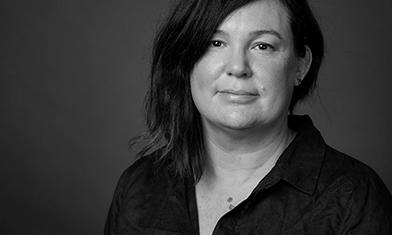
People involved in production brought personal experience to bear. Dr Timothy Parsons, who performed in “Reflections,” has lived experience of incarceration and now works to help people following release. “Upon leaving jail, the support… although they claim it’s there, it isn’t. I came out with 148 conditions of parole and I had no support, no money, no home and [eventually had] to start the whole process again.”

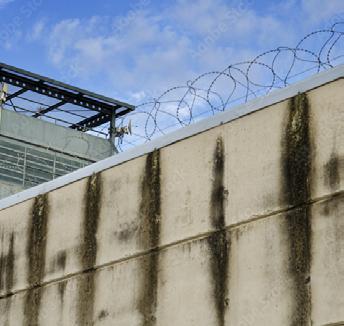

incarcerated people, thinking creatively about research translation is crucial. For Dr Aaron Hart of VACRO, a Victorian organisation that works with people impacted by the criminal justice system, these resources are “innovative advocacy… it’s particularly important to hear about Aboriginal people’s experience of accessing services.” He encourages people to “listen to these pieces with an open heart.”
Carissa Lee, a Noongar actor and writer born on WembaWemba Country who wrote “Hate This,” echoes Aaron’s emphasis on the needs of Aboriginal people, who are incarcerated at vastly disproportionate rates: “Governments and service providers need to do better, in particular to support First Nations-run organisations to bring culturally safe solutions for mob.”
The aim of the project, which has entered a new phase measuring public reactions to the performances, was to not just “share the difficulties but also include little strategies and pockets of hope,” says Kerryn. The researchers hope that the resources can also work as workforce training tools within both corrections and allied health services: “If you listen to these, it might give you some information that might enable you to do your job better, to respond better to the needs of formerly and justice-involved people.”
Anna Amanatidis, who performed in “Reflections” and has lived experience of incarceration, adds that people “need to be helped before they get released” so they “have a clear pathway.” Amanatidis also says language is powerful, recounting how she asked her GP “to rethink the way she spoke” about drug use. “I feel discriminated against every time I come here. I shouldn’t be in fear to come to my doctor.” Given broad public stigma toward both PWID and formerly

IF YOU LISTEN TO THESE, IT MIGHT GIVE YOU SOME INFORMATION THAT MIGHT ENABLE YOU TO DO YOUR JOB BETTER, TO RESPOND BETTER TO THE NEEDS OF FORMERLY AND JUSTICE INVOLVED PEOPLE. DR KERRYN DRYSDALE “ “ The study, titled “Identifying factors that improve the health of people newly released from prison who inject drugs,” found that three factors strongly constrained prisoners following their release. DISTRUST OF INSTITUTIONS, WHICH IMPEDES RECEIVING SUPPORT TO IMPROVE HEALTH AND WELLBEING PUNITIVE RESPONSES TO MISSING APPOINTMENTS POST-RELEASE EXHAUSTION, EXACERBATED BY UNREALISTIC EXPECTATIONS OF PEOPLE WHO INJECT DRUGS 1 2 3
Drugs,
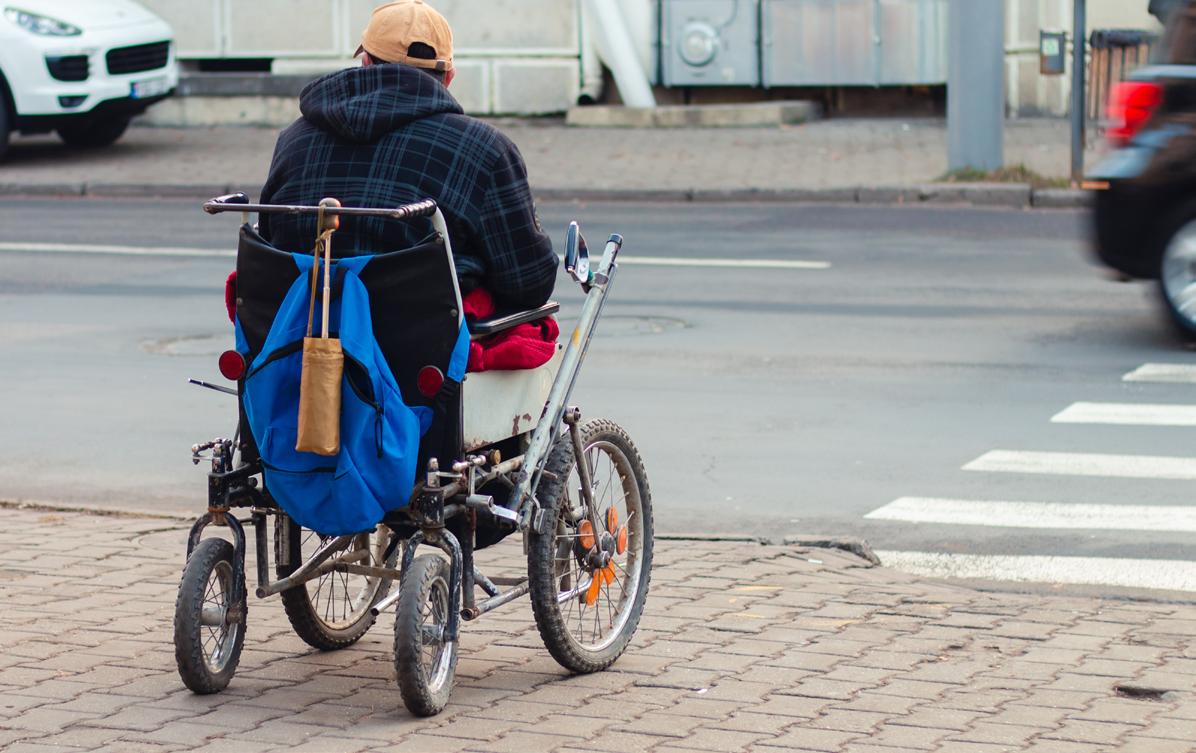
Disability & the NDIS THE NDIS WAS DESIGNED TO SUPPORT PEOPLE LIVING WITH DISABILITY, BUT ITS INNER WORKINGS HAVE NOT ALWAYS BEEN CLEAR TO THOSE ATTEMPTING TO ACCESS IT, ESPECIALLY PEOPLE WITH COMPLEX NEEDS. HOW DOES THE NDIS WORK FOR PEOPLE WITH CO-OCCURRING DISABILITY & DRUG USE?
The National Disability Insurance Scheme (NDIS) was first piloted in 2013 and became fully operational in 2020, but there are many unanswered questions around how the system is meant to serve people with disability who also use drugs. Can it cover the costs of drug treatment, for instance, or does drug use itself disqualify someone from accessing the NDIS?
By all accounts, getting onto the NDIS as a person who uses drugs (PWUD) is a gruelling process. The first set of hurdles such individuals typically face are practical barriers that prevent them from completing an application. Anthony*, a senior occupational therapist with cohealth, says that most of his team’s clients are dealing with multiple compounding factors, like housing instability and forensic histories, “which go hand-in-hand with substance use.”
clients routinely forced to relay the same, often-traumatic information to multiple agencies. “They [the service providers] are so separate and they don’t talk to each other, so it’s often an exercise in futility, at least from [the client’s] perspective.”
“They will generally find the entire NDIS process overwhelming. They kind of know about the NDIS from their peers, and by the time it comes to any NDIS discussion, they’ve heard from their mates, ‘It’s not worth it, it’s too hard.’”
Clare*, a Sydney-based NDIS recovery coach, is even blunter. “It’s literally a nightmare. If you don’t have someone holding your hand, like a psychologist or a GP, you’re not going to do it.”
“They often don’t have stable accommodation, so the stakeholders who are trying to assist them have nowhere to send the paperwork to be filled out.” Consistent access to a phone or a stable internet connection are similarly rare.
Even when these needs are taken care of, the process is anything but straightforward. Anthony speaks of “the undue or unnecessary complexity of accessing the NDIS,” with
Then there is the question of whether drug use can be grounds to reject a claim. Anthony states plainly that this is not the case – if it were, he reasons, he would have no clients. Jen Madsen, a mental health advisor working with Hireup in complex support, says that active drug use does not disqualify someone, but the support on offer does not extend to drug treatment.
“They’ll have a diagnosis that’s their primary diagnosis, and then they may have developed addiction issues along the way. What they’re getting the funding for is that primary diagnosis, not for drug and alcohol [use].” She also stresses that problematic drug use can complicate the application process and create safety risks for support workers, risks that Hireup is unwilling to accept.
“We need to ensure that they’re on a road to recovery,” she says of her clients, “that they’re in a safe space and our workers are going out to safe environments.”
Clare raises a related problem: “A mental health condition, like schizophrenia or bipolar, might become invisible in the light of drug use.” Someone applying for the NDIS may not be able to prove that it is their disability, rather than their drug use, that is negatively impacting their life.
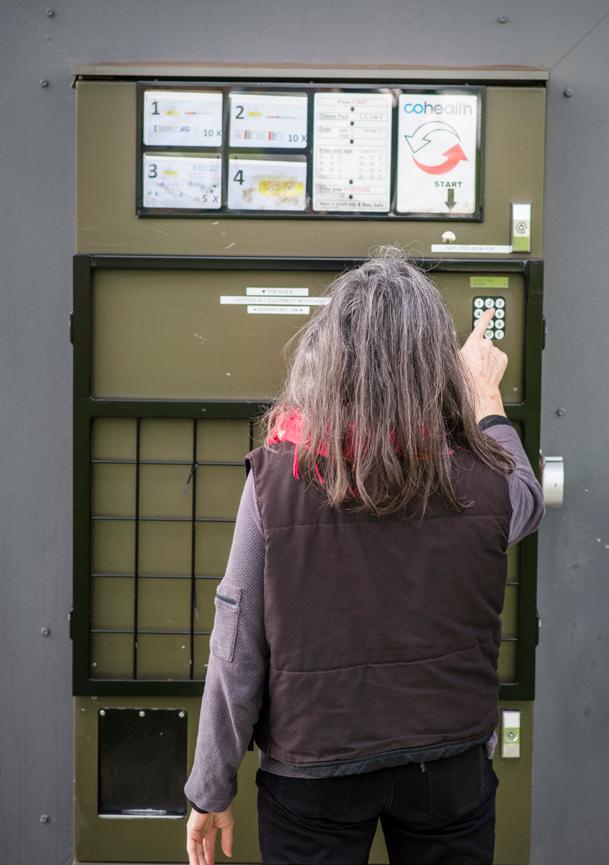
Stuart* has been on the NDIS for a serious physical disability since 2015, but he has never disclosed his decades-long heroin dependency. He has heard many instances of peers being strong-armed into treatment options they didn’t want or didn’t feel ready for, such as opioid substitution therapy.
He says that these recommendations, though technically voluntary, come with an implied ultimatum:
IT’S LIKE, ‘YOU DON’T HAVE TO DO THIS, BUT WE WOULD STRONGLY ADVISE, IF YOU WANT TO STAY ON THE PROGRAM, THAT YOU DO.’
STUART “ “ * Names altered to protect privacy
“It’s like, ‘You don’t have to do this, but we would strongly advise, if you want to stay on the program, that you do.’”
Beside these specific concerns, there is the more general issue of stigma. A lifetime spent navigating government systems and support agencies has instilled in Stuart an instinct for secrecy. “You keep your head down, you don’t want to raise red flags.”
To illustrate, he relates an incident in which a visiting support worker was moved to declare her Christianity upon seeing a Bible on Stuart’s coffee table. Stuart, a staunch atheist, had inherited the Bible when his mother died the previous year, but he chose not to correct the support worker’s assumption.
“If she thinks I’m a Christian, that’s better for our relationship,” he rationalises. “I’d rather she thinks I’m a Christian, which is false, than that I’m a ‘drug addict,’ which is true.”
Understandable as this approach may be, the obvious drawback is that it inhibits Stuart and others in his position from accessing the help they might need, or even finding out whether that help is available.
Despite its many flaws, Anthony says he is “a big proponent of the value of the NDIS.”
“I would argue that, without the NDIS, [some of] the participants that my team were servicing would be in a position where they weren’t ever able to achieve any sort of stability.”
He cites one client with complex needs, including drug use and an extensive forensic history, who, prior to accessing the NDIS, “had not had stable accommodation for a decade.”
“Without the NDIS, those mental health issues would never have been addressed, because the drug issues always came first.”
Anthony qualifies this example by noting that such cases are not the norm, admitting his astonishment that this client was able to access the NDIS at all. “I think she had a fantastic occupational therapist and outreach team.” Indeed, having a committed, compassionate, and well-connected support team who will advocate on a client’s behalf is usually the key to success, but whether your team meets those criteria is mostly down to luck.
Meagan*, a PWUD from Sydney, is of the same opinion. “If [the support worker] is someone who has a lot of stigma in their head around substances, that’s going to affect their ability to do their job well.” She counts herself lucky that she was assigned a support worker with their own lived experience of drug use, which made it easier to broach the subject without fear of judgement.
Jen Madsen agrees that people who are considering applying to the NDIS should first surround themselves with a strong support team, and she presses the importance of coming to their first meeting armed with all the necessary documentation. But she also has a bleaker message for prospective applicants.
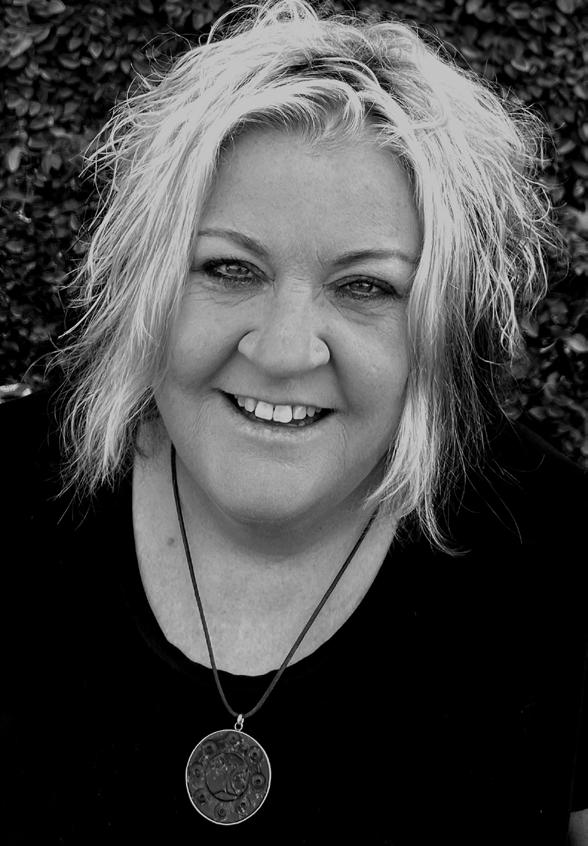
“Understand that the process is going to be traumatic in itself. It sounds terrible, because we’re trying to assist people, but they go through this process of invasion: ‘What happens when you do this? Who supports you when you become unwell? Do you experience suicide ideation?’
“All their lives, they’ve been told ‘Look at your strengths,’” she explains, but when preparing for their first NDIS meeting, the message is suddenly flipped. “You have to unveil and reveal all your illness and struggles, and you do this to a stranger. That’s very hard to cope with.”
UNDERSTAND THAT THE PROCESS IS GOING TO BE TRAUMATIC IN ITSELF. IT SOUNDS TERRIBLE, BECAUSE WE’RE TRYING TO ASSIST PEOPLE, BUT THEY GO THROUGH THIS PROCESS OF INVASION: ‘WHAT HAPPENS WHEN YOU DO THIS? WHO SUPPORTS YOU WHEN YOU BECOME UNWELL? DO YOU EXPERIENCE SUICIDE IDEATION?’
JEN MADSEN
“ “
HOW COMMON IS CO-OCCURRING DRUG USE AND DISABILITY?
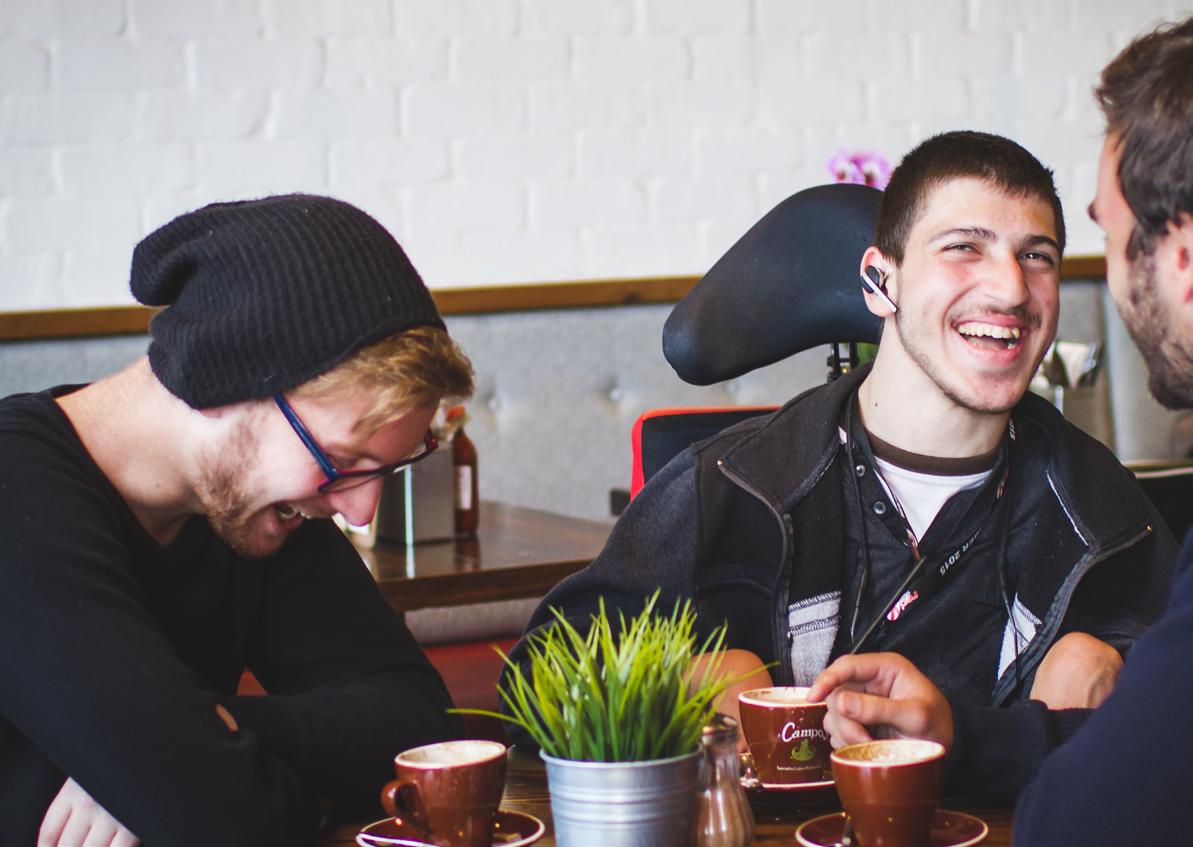
The link between poor mental health and drug use is well established; around 80 per cent of people with problematic drug use have at least one other psychiatric diagnosis. But when it comes to the overlap between drug use and disability more broadly — a category that often includes mental health conditions but also covers physical, intellectual, and sensory impairments — reliable data is far scarcer. “ “

“ “
Anthony* from Co-Health says encounters with clients who have co-occurring disability and drug use are “a daily experience.” This isn’t surprising given the organisation’s niche: “[helping] those members of our society that have some difficulty accessing health services and advocacy for various needs that they have.”
Clare*, a Sydney-based NDIS recovery coach specialising in psychosocial disability, says that around 70 per cent of her clients use or have previously used drugs. By contrast, two support workers we connected with through online disability support network Hireup have only dealt with one client each for whom drug use was an issue.
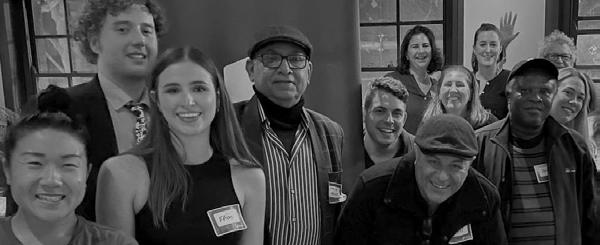
70% A DAILY EXPERIENCE
I WOULD ARGUE THAT, WITHOUT THE NDIS, [SOME OF] THE PARTICIPANTS THAT MY TEAM WERE SERVICING WOULD BE IN A POSITION WHERE THEY WEREN’T EVER ABLE TO ACHIEVE ANY SORT OF STABILITY. ANTHONY*, SENIOR OCCUPATIONAL THERAPIST AT COHEALTH “ “

Q&A
DR MARY ELLEN HARROD
Mary Ellen Harrod is the CEO of the NSW Users and AIDS Association (NUAA), a peer-based drug user organisation that is governed, staffed and led by people with lived experience of drug use. Here she talks with The Bulletin about the intersection of gender and stigma in her life, and the dissonance of advocating for urgent needs in a world of incremental policy change.
Mary, I always ask people how they got to where they are now.
I get asked that question a fair bit lately, to be honest. I’m the CEO at NUAA, where I started over seven years ago, in 2015. It was quite different to anything I’d ever done – I’d pretty much worked as a researcher before that. My previous job was working on STIs and BBVs, so I was to some extent familiar with the hepatitis C landscape in New South Wales. I knew a bit about what was going on with hep C and who the various organisations were through going to conferences and workshops, and I’d been working in Aboriginal health for five years.
Where were you working in Aboriginal health?
Kirby Institute. I was supporting Aboriginal Medical Services to do their own research; it was a national project. While I was working in hep C I had my own lived experience of drug use and hep C that I really didn’t talk to anyone about aside from a couple of close friends.
My project was ending and I was looking for a new role when the CEO of NUAA resigned and I was asked to apply for the CEO job. I thought about it a lot because it was quite different in many ways from my work to that point. And it’s been a huge learning curve; as you know, being CEO of a not-for-profit is a multifaceted undertaking. I discussed applying with my children, because I knew if I took on this role I would have to talk about my lived experience, and I made sure that was okay with them.
Can I just go back a bit, because you’ve got an American accent – where are you from in the States?
I grew up in Buffalo, New York, but I was living and working in New York City before I moved to Sydney. I met this Australian guy there who was an injecting heroin user and that was how I started, the usual story – it’s not an unusual story anyways. While I was seeing him, I got pregnant. I had a pregnancy
test, and it was actually negative. My period stopped – I didn’t really put on weight, so I thought that my period stopping was because of my drug use, but eventually it just became an inescapable conclusion that I was pregnant. I was completely unprepared to be a mother – I’d probably never even held a baby, to be honest.
That was the ’80s in the States, and I had pretty shit health cover, and I really didn’t want to go back to Buffalo. My family

were unsupportive, I think probably because of stigma; they were fine to just choof me off to Australia. I look back on that and think “Wow” – I’d just turned 24, like, what were you people thinking? Nobody even tried to get me to stay in the States – they just bought me a one-way ticket to Australia.
And when you’ve asked them more recently “What were you thinking?” what do they say in response?
You know, it’s only become more of a question for me recently, in all honesty. I think when I was 23 people just didn’t know how to deal with what I was doing and didn’t want to know about it, so the only person I’ve really posed that question to is my older brother. And I think that he had to reflect on that and say, ‘Yeah, wow’ – he had not thought of it in those terms. Because when I counterpose
his daughter, who’s older than I was then and has always lived at home, to what I was like then; I mean, they’ll do anything to support their daughter – which is where parents should be.
With my parents, I don’t even remember if they gave me any money; they literally bought me a plane ticket to Australia. It’s not to criticise my parents in terms of the help they provided – they helped me finish off my PhD, but that was 10 years later – but it was quite different for my brothers. It’s hard not to frame that in terms of stigma.
If you had been the son, do you think it would have been the same, or do you think it’s a bit worse because you were the daughter?
I think that’s an incredibly complicated question because as a daughter I was already being held to very different standards to my brothers. It’s an interesting question and something I’ve never thought about. I think that there was a greater expectation on me to conform to a feminine ideal, which I didn’t really conform to very well.
And I think it’s a similar thing that you see in being a female CEO. I think that men in positions of power are allowed a lot more latitude with eccentricities and foibles, and women in positions of power do a lot better if they have the ‘smile and do what you want’ kind of attitude, the ones that don’t openly kick back; the ones that conform to a kind of fairly narrow ideal of femininity. And as I’m sure you know, the outspokenness and bluntness that I have don’t fit with that.
And I think that it was similar as a daughter –women tend to not become injecting heroin users. Obviously there’s more stigma for anyone who’s pregnant, who does something like that. I mean, look at the Ice Inquiry response from the [NSW] government to pregnant women accessing the injecting room; it’s deluded. My mother was a very high-achieving woman, and she was much like me in many ways, but she still had that strong traditional streak –she was brought up in a really Christian family in Ohio.
Speaking of the Ice Inquiry, can you talk a little bit about your view of how this has unfolded?
We were watching the [September 21] press conference at NUAA doing a little internal tally on how many times they
used the word ‘scourge.’ Fundamentally, the New South Wales government is not stepping back from their ‘tough on drugs’ stance. On the one hand, the NSW Government said that decriminalisation is giving people permission to take drugs and that drugs have no place in our society; and then 10 minutes later, they said ‘drugs have been around since the beginning of society’ – those are fundamentally contradictory statements.
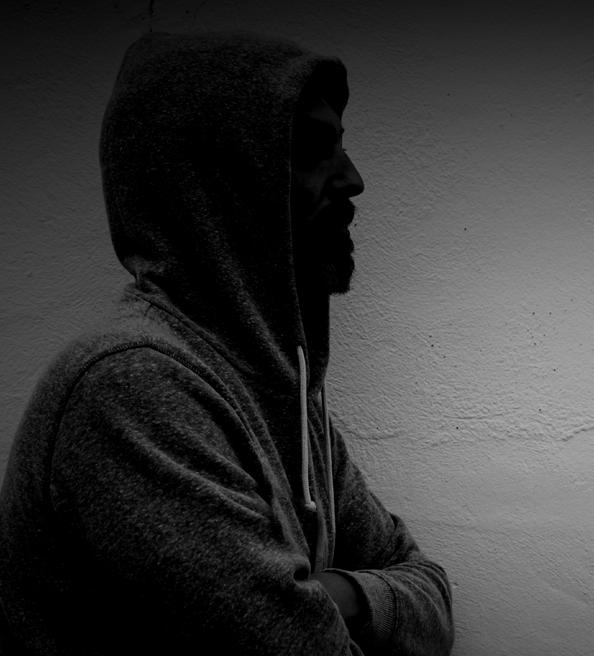
Dominic Perrotet, Brad Hazzard, and Mark Speakman all spoke to the need to take a different approach. And the findings are half a step towards taking a different approach, but it’s not a genuinely different approach. They’re not going to look at the use of sniffer dogs, and most of the harm reduction recommendations were rejected, even ice pipes.
It just seems kind of random to me: here you have Dan Howard, a distinguished jurist, who is saying the evidence is good that providing pipes in NSPs reduces use in the long term, it reduces injecting and the harms from injecting – but we’re just not going to do it. So you still have that schism; they’re saying they want to look at evidence and expertise but they’re fundamentally rejecting the key message that underpins all of the recommendations – that drug use is a health and social issue not a criminal justice issue. It’s going to be interesting to see how the strategy rolls out.
FUNDAMENTALLY,
THE NEW SOUTH WALES GOVERNMENT IS NOT STEPPING BACK FROM THEIR
TOUGH ON DRUGS
STANCE,
RIGHT? “ “

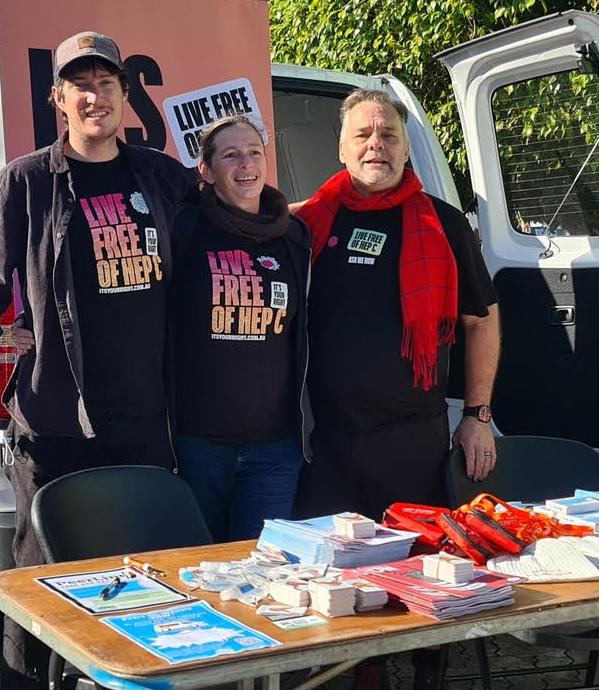
And in terms of decriminalisation, what is a pre-court diversion scheme, if not a form of decriminalisation? The scheme that they’re talking about, where you have two non-criminal proceedings – you get caught with drugs, and instead of going to court you pay a fine. Is that not a form of decriminalisation? That’s what they’re talking about, but they’re at the same time saying ‘This is not decriminalisation.’ It’s not at all surprising; you know, they’ve got to appease who they’ve got to appease, that’s the reality of government. We’re in an interesting place where clearly there is a great deal of tension within government on these issues that are so important to our community.
For me, it’s a hell of a lot better than what I was expecting. So while some of the attitude towards harm reduction is disappointing, half a billion dollars [for alcohol and other drugs-related programs] is a lot better than nothing and for that support and the recognition of peers in the response, I thank and applaud the Government. It was a great deal of work by many people to get there.
Yeah. I once went to a public forum about opening a consumption space in Liverpool. There was community sentiment pro, but there was a lot of sentiment against. And you know, you have to take that seriously, right? These aren’t bad people, it’s a very slow, generational change.
It’s why what happened to me when I was a young woman happened to me: injecting drug use is pretty confronting; it’s considered extreme behaviour, not many people do it. I don’t know if society is ever going to shift to where we’re distributing syringes in supermarkets, and consumption rooms are easily accessible across the state. That might keep a lot more people safer, but is it ever going to happen? I don’t know.
Probably not in our lifetimes, is my guess .
I would imagine the hardest thing in your job is trying to pick your battles and be sober about what the environment is. It’s not an easy space to make progress in; look at the Ice Inquiry, or the fact that you’ve got one consumption room in all of New South Wales in 2022 – and that ‘trial’ started in 2001. The pace of change is rather incremental.
No. I don’t know. I mean, I’d be worried if one of my sons started injecting. Injecting drug use is a hard life, you face more stigma and discrimination that perhaps any other group in society, even from the people closest to you. ‘Have fun and steer clear of the needle,’ as the great Jason Isbell says in one of his songs. We had a woman share a beautiful story at our recent PAC forum about how her father taught her harm reduction – she was describing a loving, supportive relationship but unfortunately, we are still in a society where many people feel that the best response to drug use is to shame and reject the person who is using.
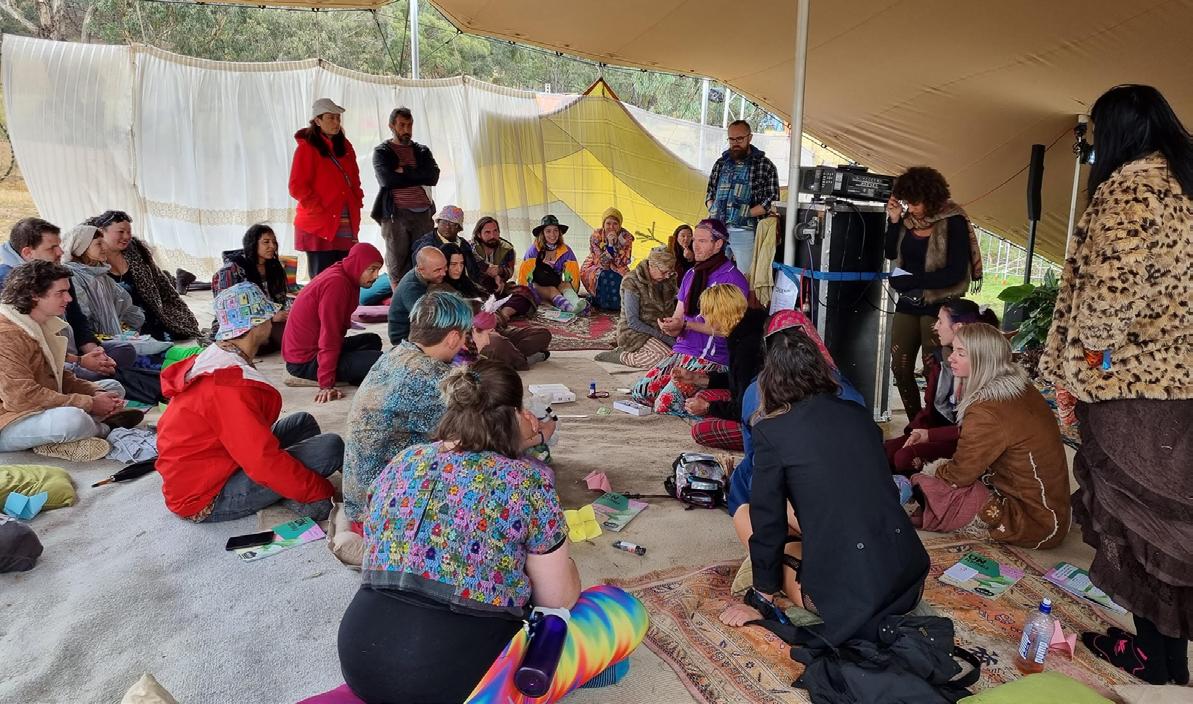

8 8 7 10 8 10 VARIOUS DATES 3 14 16 3 21 2 22 TUES TO TO TO THURS THURS MON WED THURS WED 10:00 am 12:00 am 10:00am 5:30pm 3:00pm 2:30 pm 11:30 am NOV NOV DEC NOV NOV NOV NOV NOV NOV NOV DEC NOV WANADA Aboriginal Corporation Drug Alcohol Network Annual Symposium 2022 2022 SANDAS Annual General Meeting SMART Recovery Family and Friends Online Training QNADA 360edge Families of substance: a two-day advanced masterclass in working with families Centre for Excellence in Child and Family Welfare Remaining MARAM Brief / Intermediate Training dates - 2022 TasCAHRD Bloodwise - Learn about blood borne viruses: how they affect Tasmanians and what you can do to reduce the risk of transmission in your community. 2022 NADA Annual General Meeting NADA Interpreting data to improve service delivery (Webinar) SHARC Victorian Peer Worker Training 6 Sessions over 2 weeks Enrolments close 4 November NADA Working with women engaged in AOD treatment, and responding to domestic and family violence NDARC Trends in the use of new psychoactive substances using wastewater analysis, FREE Webinar Hobart, Tas Click here for event info Coffs Harbour, NSW Click here for event info Rydges Sydney Central Click here for event info Online Click here for event info Online Click here for event info Online Click here for event info Duntryleague, Orange, NSW Click here for event info Online Click here for event info Online Click here for event info Adelaide, SA Click here for event info Online Webinar Click here for event info The Bulletin’s bimonthly event calendar features events from across Australia relevant to the NSP workforce. We would love to include your organisation’s event in the next edition. Please click here to submit the details for consideration. CALENDAR OF EVENTS NOVEMBER THE BULLETIN



 CEO Penington Institute
CEO Penington Institute

 COVER IMAGE: Mary Harrod At Sydney Mardi Gras
COVER IMAGE: Mary Harrod At Sydney Mardi Gras






















